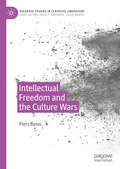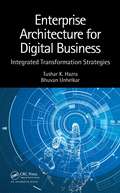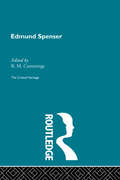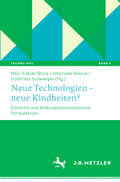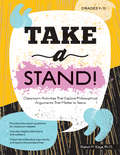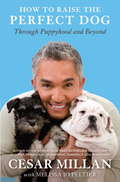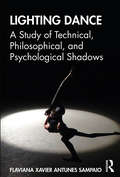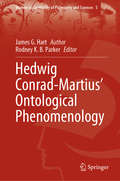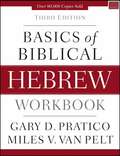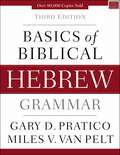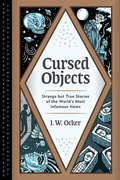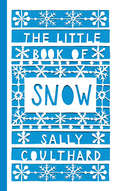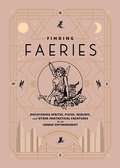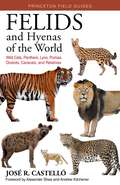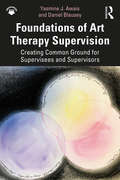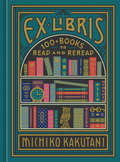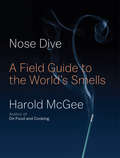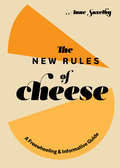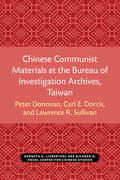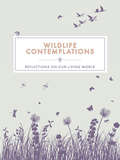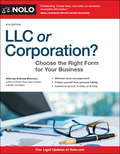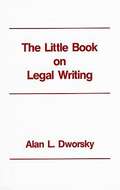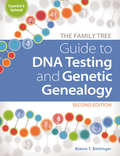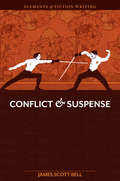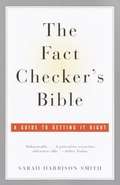- Table View
- List View
Intellectual Freedom and the Culture Wars (Palgrave Studies in Classical Liberalism)
by Piers BennThis book offers a sustained and vigorous defence of free expression and objective enquiry situated in the context of the current culture wars. In the spirit of J. S. Mill, Benn investigates objections to the ideal of free expression in relation to harm and offence, reaching broadly liberal conclusions with reference to recent examples of attempts to curb free speech on university campuses. Accepting that some expressions can cause non-physical harm, Benn also considers objections to free speech based on certain understandings of power and privilege. In its exploration and rejection of arguments against the possibility of obtaining objective truth, the book navigates hotly contested fields of contemporary debate, including feminism and identity politics. It challenges the dogma of social constructionism and examines current notions of identity, arguing that a case for fairness can be made without appealing to them. Offering a qualified endorsement of friendship between ideological opponents, Benn highlights common obstacles to civil and rational discussions, concluding with a rational, moral, and broadly spiritual solution to the cultural combat that monopolises present-day society.
Enterprise Architecture for Digital Business: Integrated Transformation Strategies
by Bhuvan Unhelkar Tushar K. HazraEnterprise Architecture (EA) is an essential part of the fabric of a business; however, EA also transcends and transforms technology and moves it into the business space. Therefore, EA needs to be discussed in an integrated, holistic, and comprehensive manner. Only such an integrated approach to EA can provide the foundation for a transformation that readies the business for the myriad enterprise-wide challenges it will face. Highly disruptive technologies such as Big Data, Machine Learning, and Mobile and Cloud Computing require a fine balance between their business and technical aspects as an organization moves forward with its digital transformation. This book focuses on preparing all organizations – large and small – and those wishing to move into them for the impact of leveraging these emerging, disruptive, and innovative technologies within the EA framework.
Edmund Spencer: The Critical Heritage
by R. M. CummingsThis book examines Edmund Spenser's essays. It presents the criticisms of John Dryden, which are determined by his own preoccupations than by his reading of other critics, and contains three larger sections (covering the periods 1579-1600, 1600-1660, 1660-1715) into which all this material falls.
Neue Technologien – neue Kindheiten?: Ethische und bildungsphilosophische Perspektiven (Techno:Phil – Aktuelle Herausforderungen der Technikphilosophie #3)
by Johannes Drerup Gottfried Schweiger Marc Fabian BuckZu den wichtigen sozialen Einflussgrößen, die nicht nur die Konstruktion, sondern auch die Realität und Praxis institutionalisierter Kindheit(en) mitbestimmen, gehören, so der Ausgangspunkt und der Gegenstand dieses Bandes, technologische Entwicklungen und die Anwendung und Nutzung von Techniken in der Kindheit für und durch Kinder. Technische Arrangements und Praktiken sind während der Kindheit omnipräsent. In diesem Band werden systematische ethische und erziehungs-, bildungs- und kindheitsphilosophische Fragen diskutiert, die sich im Umgang mit neuen Technologien und Techniken stellen. Hierzu zählen z.B. Fragen der folgenden Art: Wie sind (Neben-)Folgen der Einführung von AI-Systemen in Unterricht und Schule zu verstehen und zu bewerten? Dürfen Eltern die Fotos ihrer Kinder auf Facebook teilen? Welche Möglichkeiten und Fallstricke bietet die Nutzung von Robotern in pädagogischen Kontexten? Welche Rolle spielen neue Technologien bei der Gestaltung des Generationenverhältnisses und für technisch vermittelte und realisierte „Regime der Kindheit“?
Take a Stand!: Classroom Activities That Explore Philosophical Arguments That Matter to Teens
by Sharon KayeTake a Stand! (grades 9–12) helps teens develop critical thinking skills by examining debates on issues directly relevant to their lives (that you won't find in most classroom materials). Each chapter:Covers an important topic relating to electronics, sex, mental health, and relationships.Presents a question for debate, such as "Should kids choose their own religion?" and "Is it possible to love more than one person?"Shows how each issue might arise in an ordinary teen conversation.Presents and explores two or more opposed answers to philosophical debates.Encourages high school students to develop their own positions while learning to appreciate other perspectives.Throughout the book, the chapter contributors—all current or recent teens themselves—highlight key definitions, quote compelling sources, and diagram the central arguments. Each chapter includes discussion questions to guide arguments, as well as helpful sidebars and illustrations to increase comprehension. Perfect for inspiring classroom discussion of topics that matter to today's teens.
How to Raise the Perfect Dog: Through Puppyhood and Beyond
by Cesar Millan Melissa Jo PeltierFrom the bestselling author and star of National Geographic Channel's Dog Whisperer, the only resource you’ll need for raising a happy, healthy dog. For the millions of people every year who consider bringing a puppy into their lives–as well as those who have already brought a dog home–Cesar Millan, the preeminent dog behavior expert, says, "Yes, you can raise the perfect dog!" It all starts with the proper foundation in the early years. Here, Cesar tells you everything you need to know to create the best environment for a well-balanced dog in order to avoid behavior issues in the future, and shows you how to correct the most common behavior issues for young dogs. Based on Cesar’s own detailed experiences raising individual puppies from some of the most popular breeds, How to Raise the Perfect Dog is like having Cesar right beside you, as your own personal expert, coaching you and your dog from the first day of your life together. Packed with new information aimed specifically at the particular needs of puppies and adolescents, and written in Cesar's friendly, accessible style, How to Raise the Perfect Dog answers all the most commonly asked questions and guides you towards a loving, satisfying life-long relationship with your best friend. #1 New York Times bestselling author, Cesar Millan shows you how to raise the perfect dog and prevent behavior issues before they start, including:• what to expect from each stage of your puppy's development• quick and easy housebreaking• the essentials of proper nutrition• the importance of vaccinating–and of not over-vaccinating• creating perfect obedience from day one through rules, boundaries, and calm-assertive leadership• how to avoid the most common mistakes owners make raising puppies and young dogs• how to correct any issue before it becomes a problem• unique exercises and play to bring out the best in every breedFrom the Hardcover edition.
Lighting Dance: A Study of Technical, Philosophical, and Psychological Shadows
by Flaviana Xavier SampaioLighting Dance pioneers the discussion of the ability of lighting design to foreground shadow in dance performances. Through a series of experiments integrating light, shadow, and improvised dance movement, it highlights and analyses what it advances as an innovative expression of shadow in dance as an alternative to more conventional approaches to lighting design. Different art forms, such as painting, film, and dance pieces from Loie Fuller, the Russell Maliphant Dance Company, Elevenplay, Pilobolus, and the Tao Dance Theater served to inspire and contextualise the study. From lighting to psychology, from reviews to academic books, shadows are examined as a symbolic and manipulative entity. The book also presents the dance solo Sombreiro, which was created to echo the experiments with light, shadow, and movement aligned to an interpretation of cultural shadow (Jung 1954, in Samuels, Shorter, and Plaut 1986; Casement 2006; Ramos 2004; Stein 2004; and others). The historical development of lighting within dance practices is also outlined, providing a valuable resource for lighting designers, dance practitioners, and theatre goers interested in the visuality of dance performances.
Hedwig Conrad-Martius’ Ontological Phenomenology (Women in the History of Philosophy and Sciences #5)
by James G. HartThis work is an introduction to the totality of the metaphysical philosophy of nature of Hedwig Conrad-Martius (1888-1966). Her own training and inclination as a realist phenomenologist enables a unique perspective on central issues in modern and contemporary (twentieth century) theoretical biology and physics. Here we find novel theories of, e.g., space and time, as well as development and evolution. This work is thus of interest to anyone studying the history of the phenomenological movement as well as religious cosmology.The philosophical basis for this cosmology is Conrad-Martius’ “realontology” which is a phenomenological account of the essence of appearing reality. The full elaboration of the modes of appearing of what is real enables the unfolding of an analogical theory of “selfness” within the order of nature culminating in an account of the coming to be of humans, for whom there is an essentially distinctive world- and self-manifestation for which she reserves the term “spirit.” Key to her position is the revival of ancient metaphysical themes in new transformed guises, especially potentiality and entelechy.Nature’s status, as a self-actuation of world-constituting essence-entelechies, places Conrad-Martius in the middle of philosophical-theological discussions of, e.g., the hermeneutical mandate of demythologization as well as the nature of evolution. Of special interest is her insistence on both nature’s self-actuating and evolving powers and a robust theory of creation.
Basics of Biblical Hebrew Workbook: Third Edition (Zondervan Language Basics Series)
by Gary D. Pratico Miles V. Van PeltThis updated workbook is designed with the student in mind and intended for use with the standard-setting Basics of Biblical Hebrew Grammar textbook, now in its third edition. In addition to corresponding to the revisions and updates in Basics of Biblical Hebrew Grammar, this workbook includes significant changes to the interior presentation; less unnecessary questions and exercises; and six reading texts interspersed among the exercises for the derived stems.The workbook is an essential chapter-by-chapter companion and includes helpful exercises and translation homework. As students complete the assignments in the workbook, the concepts they have been learning from the main grammar are reinforced, making this an invaluable study tool to enhance student learning.
Basics of Biblical Hebrew Grammar: Third Edition (Zondervan Language Basics Series)
by Gary D. Pratico Miles V. Van PeltClear. Understandable. Carefully organized. Basics of Biblical Hebrew Grammar by Gary D. Pratico and Miles V. Van Pelt is the standard textbook for colleges and seminaries. Since its initial publication in 2001 its integrated approach has helped more than 80,000 students learn Biblical Hebrew.The third edition of Basics of Biblical Hebrew Grammar represents a significant updating and revision of the previous edition with the goal of providing students with the best possible tool for learning Biblical Hebrew. Some of the keys to the effectiveness of Basics of Biblical Hebrew Grammar in helping students learn is that it:Combines the best of inductive and deductive approachesUses actual examples from the Hebrew Old Testament rather than &“made-up&” illustrationsEmphasizes the structural pattern of the Hebrew language rather than rote memorization, resulting in a simple, enjoyable, and effective learning processEmploys colored text that highlights key features of nouns and verbs, allowing easy recognition of new formsIncludes appendices of verbal paradigms and diagnostics for fast reference and a complete vocabulary glossaryDisplays larger font and text size, making reading easierBy the time students have worked their way through Basics of Biblical Hebrew Grammar they will have learned:The Hebrew AlphabetVocabulary for words occurring 70 times or more in the Hebrew BibleThe Hebrew noun systemThe Hebrew verbal systemA robust suite of learning aids is available for purchase to be used alongside the textbook to help students excel in their studies. These include a workbook; video lectures for each chapter featuring the author; flashcards keyed to vocabulary in each chapter; a laminated study sheet with key concepts; audio of the vocabulary for each chapter to aid in acquisition; and a compact guide to help refresh students refresh their memory on language forms, grammar, and word meanings.
Cursed Objects: Strange but True Stories of the World's Most Infamous Items
by J. W. OckerBeware...this book is cursed! These strange but true stories of the world&’s most infamous items will appeal to true believers as well as history buffs, horror fans, and anyone who loves a good spine-tingling tale. They&’re lurking in museums, graveyards, and private homes. Their often tragic and always bizarre stories have inspired countless horror movies, reality TV shows, novels, and campfire tales. They&’re cursed objects, and all they need to unleash a wave of misfortune is . . . you. Many of these unfortunate items have intersected with some of the most notable events and people in history, leaving death and destruction in their wake. But never before have the true stories of these eerie oddities been compiled into a fascinating and chilling volume. Inside, readers will learn about: • Annabelle the Doll, a Raggedy Ann doll that featured in the horror franchise The Conjuring • The Unlucky Mummy, which is rumored to have sunk the Titanic and kick-started World War I • The Dybbuk box, which was sold on eBay and spawned the horror film The Possession • The Conjured Chest, which has been blamed for fifteen deaths within a single family • The Ring of Silvianus, a Roman artifact believed to have inspired J. R. R. Tolkien&’s The Hobbit • And many more!
The Little Book of Snow
by Sally CoulthardThe Little Book of Snow is a charming celebration of all things snow.This sweet book includes entries like how to build the perfect snowman, what gives snow its color, and snow-inspired folklore from around the world.With iridescent white foil and lovely woodblock illustrations throughout, this petite book makes a wonderful gift.• Features captivating trivia about snow• Follows delightful traditions about winter wonderlandsThe Little Book of Snow is a lovely book for winter sports enthusiasts and anyone who enjoys the magic of a winter wonderland.• A celebration of the joys of winter• Makes a holiday book for outdoorsy people, winter sport fanatics, those who live in snowy climates, and anyone who has a cabin.• You'll love this book if you love books like The History of the Snowman by Bob Eckstein, Snow Play by Birgitta Ralston, and Powder: The Greatest Ski Runs on the Planet by Patrick Thorne.
Finding Faeries: Discovering Sprites, Pixies, Redcaps, and Other Fantastical Creatures in an Urban Environment
by Alexandra RowlandDiscover where faeries and other mythical creatures are hiding in our modern, urban environment with this beautifully illustrated guide to uncovering magical beings. From the musty corners of libraries to the darkest depths of urban sewers, faeries, boggarts, redcaps, and other fantastical species can be found all around us—but only if we know where to look. And like every other being in the modern world, these wonderous creatures have been forced to adapt to the climate, industrial, and cultural changes of the modern era. Many formerly common creatures from akeki to cave trolls have been driven out by the urban sprawl, technological advancements, and climate change while others, including ether sprites and brownies, have been able to thrive in abundance, creating homes within electrical hotbeds and massive landfills. Featuring descriptions of magical creatures from around the globe, this encyclopedic collection details the history and adaptability of more than fifty different species of fae. Describing little-known and fascinating creatures such as the Luck Pigeon of Baltimore, the akaname of Eastern Asia, and the konderong of South Africa, this book will expose readers to fantastical species from a variety of cultures and communities. Combining scholarship with modern lore and environmentalism, and featuring stunning hand-drawn illustrations, Finding Faeries is a captivating look at the fantastical beings that inhabit our world today.
Felids and Hyenas of the World: Wildcats, Panthers, Lynx, Pumas, Ocelots, Caracals, and Relatives
by Dr. José R. CastellóThe most comprehensive and user-friendly photographic field guide to the world’s wildcats and hyenasFrom the Leopard Cat of Asia, the Black-footed Cat of Africa, and the Amur Tiger of Siberia to South America’s Ocelots and North America’s Bobcats, the wildcats known as felids are among the most fascinating and spectacular of all animals. This stunningly illustrated book is the most comprehensive and user-friendly guide to the world’s felids and their often misunderstood relative, the hyenas. Covering and illustrating every species and subspecies, the guide features more than 150 superb full-color plates that incorporate more than 600 photographs and show species in similar poses for quick and easy comparison. Drawing on the latest taxonomy and research, the facing-page species accounts provide distribution maps, common and scientific names, and detailed information on key identification features, distribution, behavior, reproduction, similar species, habitat, conservation status, and where to observe each species. An ideal field companion for use anywhere in the world, the book will appeal to both casual nature enthusiasts and seasoned professionals.Covers 41 felids and 4 hyenas—every species and subspecies in the worldFeatures more than 150 color plates incorporating more than 600 photosDepicts species in similar poses for quick and easy comparisonsProvides key identification information in detailed, facing-page species accountsUses the latest taxonomyIncludes easy-to-read distribution maps and tips on where to observe each species
Foundations of Art Therapy Supervision: Creating Common Ground for Supervisees and Supervisors
by Daniel Blausey Yasmine J. AwaisFoundations of Art Therapy Supervision serves as a reference guide for art therapists who have found themselves in supervisor roles without prior training and supervisees hoping to learn what to expect from the supervision relationship, and illustrates how to receive and provide clinical art therapy supervision. Written by two art therapists with over 35 years of collective supervision experience, this new resource includes a framework for providing effective supervision in the classroom and in the field, case studies and art-based supervisory exercises, and guidance for new professionals seeking certification or licensure. Chapters weave the authors’ supervision experience with a significant literature review, and feature explanations on how professional identities (art therapist, psychotherapist, counselor, supervisor, supervisee, administrator, educator, etc.) and personal identities (gender, race, sexuality, etc.) influence the supervisory and therapeutic relationships. This book will teach supervisees how to make the most of their experience while simultaneously providing a comprehensive reference for practicing supervisors.
Ex Libris: 100+ Books to Read and Reread
by Michiko KakutaniPulitzer Prize–winning literary critic Michiko Kakutani shares 100 personal, thought-provoking essays about books that have mattered to her and that help illuminate the world we live in today—with beautiful illustrations throughout.In the introduction to her new collection of essays, Ex Libris: 100+ Books to Read and Reread, Michiko Kakutani writes: "In a world riven by political and social divisions, literature can connect people across time zones and zip codes, across cultures and religions, national boundaries and historical eras. It can give us an understanding of lives very different from our own, and a sense of the shared joys and losses of human experience." Readers will discover novels and memoirs by some of the most gifted writers working today; favorite classics worth reading or rereading; and nonfiction works, both old and new, that illuminate our social and political landscape and some of today&’s most pressing issues, from climate change to medicine to the consequences of digital innovation. There are essential works in American history (The Federalist Papers, The Writings and Speeches of Martin Luther King, Jr.); books that address timely cultural dynamics (Elizabeth Kolbert&’s The Sixth Extinction, Daniel J. Boorstin's The Image, Margaret Atwood&’s The Handmaid&’s Tale); classics of children's literature (the Harry Potter novels, Where the Wild Things Are); and novels by acclaimed contemporary writers like Don DeLillo, William Gibson, Chimamanda Ngozi Adichie, and Ian McEwan.With richly detailed illustrations by lettering artist Dana Tanamachi that evoke vintage bookplates, Ex Libris is an impassioned reminder of why reading matters more than ever.
Nose Dive: A Field Guide to the World's Smells
by Harold McGeeThe ultimate guide to the smells of the universe--the ambrosial to the pungent, and everything in between--from the author of the acclaimed culinary guides On Food and Cooking and Keys to Good Cooking.From Harold McGee, James Beard Award-winning author and leading expert on the science of food and cooking, comes an extensive exploration of the awe-inspiring world of smell. In Nose Dive, McGee takes us on a sensory-filled adventure, from the sulfurous nascent earth more than four billion years ago, to the sweetly fragrant Tian Shan mountain range north of the Himalayas, to the keyboard of your laptop, where trace notes of formaldehyde escape between the keys. We'll sniff the ordinary (wet pavement and cut grass) and extraordinary (fresh bread and chocolate), the delightful (roses and vanilla) and the unpleasant (spoiled meat and rotten eggs). We'll smell each other. We'll smell ourselves.Through it all, McGee familiarizes us with the actual bits of matter that we breathe in -- the molecules that trigger our perceptions, that prompt the citrusy smells of coriander and beer and the medicinal smells of daffodils and sea urchins. And like everything in the physical world, molecules have histories. Many of the molecules that we smell every day existed long before any creature was around to smell them -- before there was even a planet for those creatures to live on. Beginning with the origins of those molecules in interstellar space, McGee moves onward through the smells of our planet, the air and the oceans, the forest and the meadows and the city, all the way to the smells of incense, perfume, wine, and food. Here is a story of the world, of all of the smells under our collective nose. A work of astounding scholarship and originality, Nose Dive distills the science behind the smells and translates it, as only McGee can, into an accessible and entertaining guide. Incorporating the latest insights of biology and chemistry, and interwoven with personal observations, McGee reveals how our sense of smell has the power to expose invisible, intangible details of our material world and life, and trigger in us feelings that are the very essence of being alive.
The New Rules of Cheese: A Freewheeling and Informative Guide
by Anne SaxelbyA fun and quirky guide to the essential rules for enjoying cheese &“The New Rules of Cheese will empower you to choose a more flavorful future, one that supports the small dairies and cheesemakers that further the diverse and resilient landscape we so desperately need.&”—Dan Barber, chef and co-owner of Blue Hill This richly illustrated book from a lauded cheesemonger—perfect for all cheese fans, from newcomers to experts—teaches you how to make a stylish cheese platter, repurpose nibs and bits of leftover cheese into something delicious, and expand your cheese palate and taste cheeses properly. Alongside the history and fundamentals of cheese-making, you&’ll even learn why cheese is actually good for you (and doesn&’t make you fat!), find enlightenment on the great dairy debate—pasteurized versus not pasteurized—and improve your cheese vocabulary with a handy lexicon chart.
Chinese Communist Materials at the Bureau of Investigation Archives, Taiwan (Michigan Monographs In Chinese Studies #24)
by Peter Donovan Lawrence R. Sullivan Carl E. DorrisDuring the long years of civil strife in China the Nationalist authorities amassed extensive materials on their Communist adversaries. Now stored in government institutions on Taiwan, these materials are an excellent source for the study of the Chinese Communist movement. Among them is the Bureau of Investigation Collection (BIC), which holds over 300,000 volumes of primary documents on the Chinese Communist movement. The purpose of Chinese Communist Materials is, without any attempt at comprehensive listing of the Bureau’s holdings, to give scholars a representative description of the collection, to point out its implications for research, and suggest new areas for research at the Bureau in the fields of political science and history [1, 4].
Wildlife Contemplations: Reflections on Our Living World
by Various‘All paths lead nowhere, so it is important to choose a path that has heart.' - Carlos Castaneda. This beautifully packaged book offers the reader a rare opportunity to slow down and receive the natural restorative power of nature through a selection of beautiful, evocative quotes which transports the reader to a space of contemplative reflection inspired by wildlife.‘Once trodden by human feet, a natural path becomes a work of man, each traveller marking the way for the next, sometimes departing from the most direct or obvious route to avoid a muddy patch, or to keep out of sight of possible enemies. Feet follow foosteps and so a road is trodden in history.’ The Oldest Road, An Exploration of the Ridgeway, JRL Anderson and Fay Godwin
LLC or Corporation?: Choose the Right Form for Your Business
by Anthony MancusoLLC vs. C-Corp vs. S-Corp: The most important business decision you’ll make Whether you are starting a new business or thinking about an existing one, the big question is “Which legal structure is best?” The answer has important legal and tax consequences. LLC or Corporation? explains: the basics of all business entities why sole proprietorships and partnerships are usually a poor choice how to avoid being personally liable for business debts how to pay less tax by choosing the right entity how to convert from one business entity to another, and requirements for doing business out of state. LLC or Corporation? is packed with real-world examples to help you make the best choice for your company. The 9th edition is updated with COVID-related information for small businesses.
The Little Book on Legal Writing
by Alan L. DworskyThis book is geared to the kind of writing first-year law students do in a standard legal writing course: memorandums and briefs. However, almost all the advice given applies to other kinds of legal writing as well, such as contracts and pleadings. In fact, much of the advice applies to nonfiction writing in general, because good legal writing is simply good writing. Each subject is broken down into simple, concise sections, making The Little Book on Legal Writing an excellent title for any professor s legal writing course.
The Family Tree Guide to DNA Testing and Genetic Genealogy
by Blaine BettingerDiscover the answers to your family history mysteries using the most-cutting edge tool available to genealogists. This plain-English guide, newly revised and expanded, is a one-stop resource on genetic genealogy for family historians. Inside, you’ll learn what DNA tests are available, with up-to-date pros and cons of the major testing companies (including AncestryDNA) and advice on choosing the right test to answer your specific questions. For those who've already taken DNA tests, this guide will demystify and explain how to interpret DNA test results, including how to understand ethnicity estimates and haplogroup designations, navigate suggested cousin matches, and use third-party tools like GEDmatch to further analyze data. Inside, you'll find:Colorful diagrams and expert definitions that explain key DNA terms and concepts, such as haplogroups and DNA inheritance patternsDetailed guides to each of the major kinds of DNA tests: autosomal-DNA (atDNA), mitochondrial-DNA (mtDNA), Y-chromosomal DNA (Y-DNA), and X-chromosomal DNA (X-DNA)Tips for selecting the DNA test that can best help solve your family mysteries, with case studies showing how each test can be useful in researchInformation about third-party tools you can use to more thoroughly analyze your test results once you've received themTest companion guides and research forms to help you select the most appropriate DNA test and organize your results and research once you've been tested
Elements of Fiction Writing: Conflict & Suspense (Elements Of Fiction Writing Ser.)
by James Scott BellRamp up the tension and keep your readers hooked! Inside you'll find everything you need to know to spice up your story, move your plot forward, and keep your readers turning pages. Expert thriller author and writing instructor James Scott Bell shows you how to craft scenes, create characters, and develop storylines that harness conflict and suspense to carry your story from the first word to the last. Learn from examples of successful novels and movies as you transform your work from ho-hum to high-tension. Pack the beginning, middle, and end of your book with the right amount of conflict. Tap into the suspenseful power of each character's inner conflict. Build conflict into your story's point of view. Balance subplots, flashbacks, and backstory to keep your story moving forward. Maximize the tension in your characters' dialogue. Amp up the suspense when you revise. Conflict & Suspenseoffers proven techniques that help you craft fiction your readers won't be able to put down.
The Fact Checker's Bible: A Guide to Getting It Right
by Sarah Harrison SmithThe first book of its kind,The Fact Checker’s Bibleis the essential guide to the important but often neglected task of checking facts, whatever their source. Today, everyone is overwhelmed with information that claims to be factual. But even the most punctilious researcher, writer, student or journalist--not to mention the lazy or deliberately mendacious ones--can sometimes get it wrong. So checking facts has become a more pressing task. But how to go about it? The Fact Checker’s Biblecovers: *Reading for accuracy *Determining what to check *Researching the facts *Assessing sources: people, newspapers and magazines, books, the Internet, etc. *Checking quotations *Understanding the legal liabilities of getting it wrong *Looking out for and avoiding the dangers of plagiarism For everyone from students to editors to journalists, the methods and practices outlined inThe Fact Checker’s Bibleprovides both a standard and a working manual for how to get the facts right. From the Trade Paperback edition.
